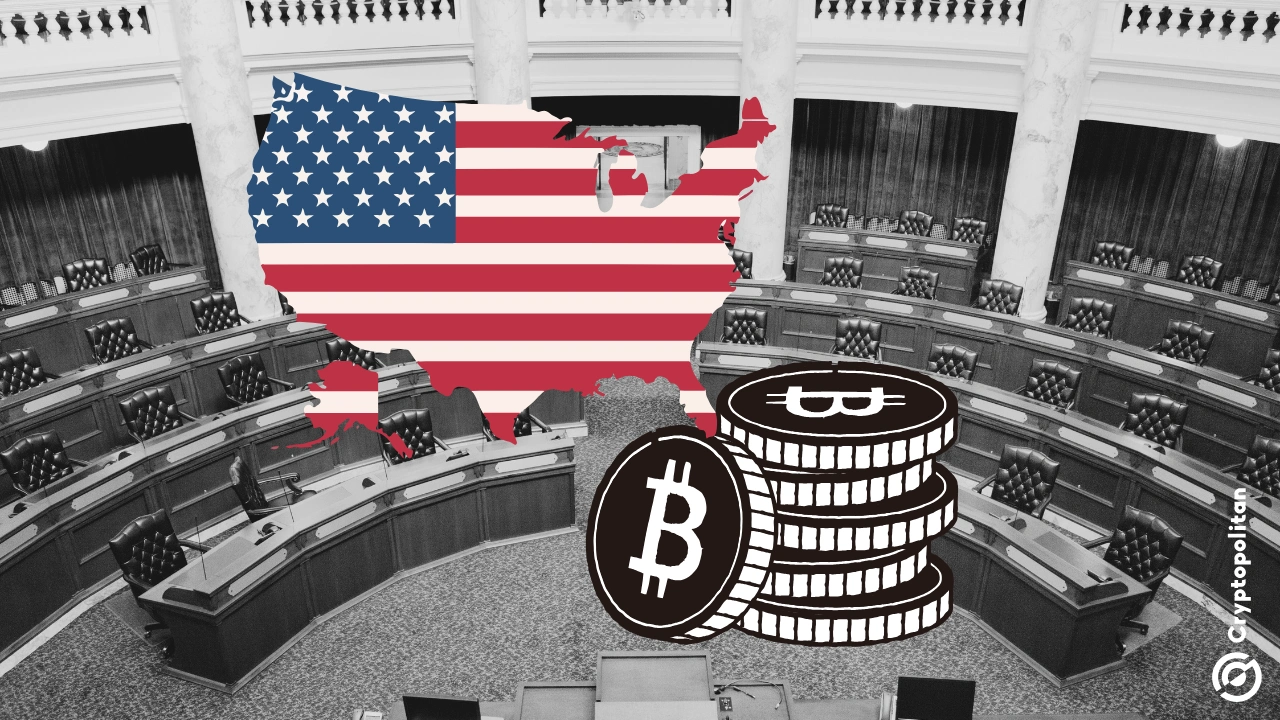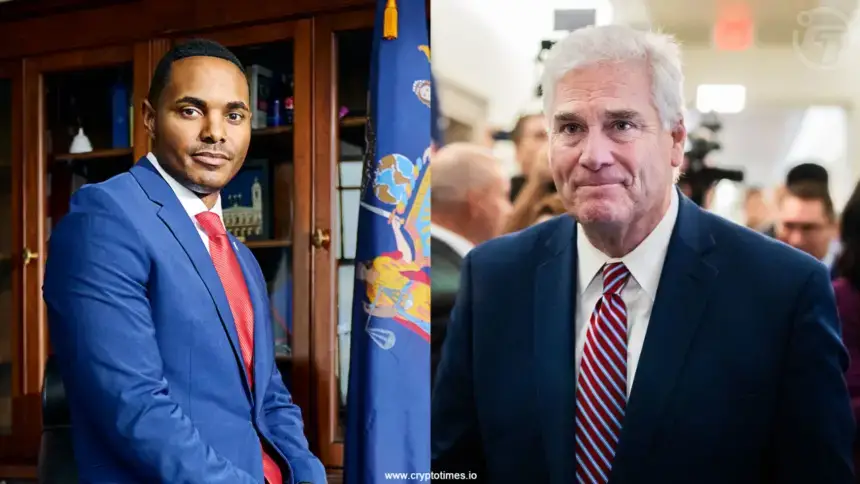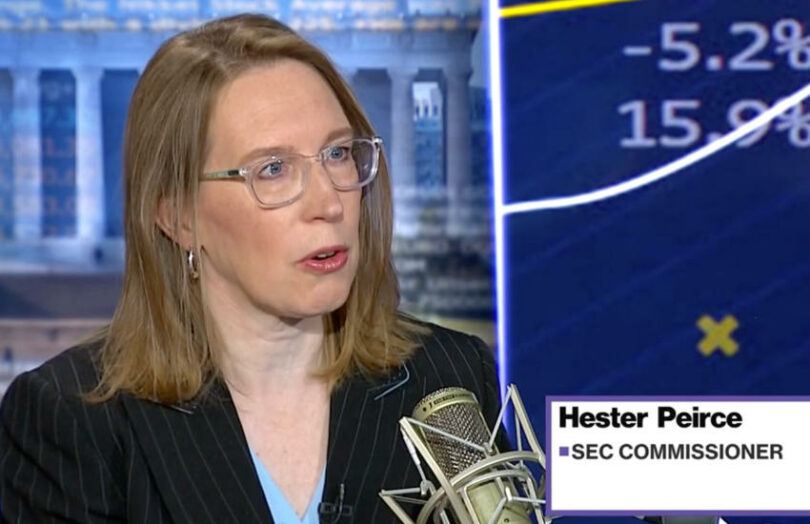
In the new and untamed Wild West of cryptocurrencies, the rules were once like shadows in the mist, blurry and elusive. Investors, entrepreneurs, and dreamers ran across this land, only to be tripped up by legal voids and the iron fist of regulation. However, a transformation is quietly unfolding in Washington - the two forces of the U.S. Congress and the Securities and Exchange Commission (SEC), each with its own beliefs and missions, are trying to map out a clear picture of this chaotic domain. This is a battle over innovation, power, and the future, and the latest chapter of the story is unfolding as Gary Gensler steps down and the SEC takes new actions.
The Congressional Pioneers: The Rise of the Crypto Core Group
The story begins in the corridors of the Capitol. Here, partisan divisions are like an invisible barrier, but cryptocurrencies have become a rare topic that unites lawmakers from both parties. Tom Emmer, a rugged Minnesota Republican Congressman who was once a lawyer and a radio host, is a pragmatist who firmly believes that economic freedom is the key to the future, and cryptocurrencies are the embodiment of that key. On the other side, Ritchie Torres, a young Democratic Congressman from the Bronx, New York, brings idealistic passion. Growing up in a low-income community, he knows how the financial system has excluded the vulnerable, and thus sees cryptocurrencies as a rope that can pull ordinary people closer to wealth.

These two men, despite their different personalities, have come together due to their shared beliefs. They have convened a group of like-minded Congressmen to form the "Congressional Crypto Core Group." Other members include Bill Foster, a physics Ph.D. who understands the mysteries of code and Block, who co-authored the "Blockchain Regulatory Certainty Act" with Emmer in 2018 to give developers some breathing room; and Darren Soto, a tech enthusiast from Florida, who has proposed consumer protection legislation to make crypto trading less like gambling.
This group has come together not for fame or fortune, but because they firmly believe: if America does not quickly pave the way for cryptocurrencies, the train of the global digital economy will leave them behind without mercy. Emmer once banged the table in a hearing, exclaiming: "We cannot let regulatory uncertainty stifle the next technological revolution!" Torres spoke softly yet with hope: "This is not about party lines, but about giving everyone a chance." They hold meetings, host roundtables, and invite industry experts, trying to use the law to drive a few stakes into the ground of this wildly growing industry. For example, the "Safe Harbor Act" aims to exempt the tax burden of obtaining new tokens through Block forks; and the "Digital Asset Market Structure and Investor Protection Act" attempts to classify digital assets, clarifying which are securities and which are not.
The SEC's Transformation: From Iron Fist to Dialogue
Meanwhile, at the other end of Washington, a storm is brewing within the SEC's headquarters. For a long time, the SEC has been known for its tough stance on cryptocurrency regulation, especially under the leadership of former Chairman Gary Gensler. He viewed the crypto industry as an area that needed strict control, frequently wielding enforcement measures that made many innovators hesitant. However, Gensler's departure has become a turning point, and the atmosphere within the SEC has begun to loosen, with the regulatory winds shifting.
In this transformation, Hester Peirce is undoubtedly a key figure. Affectionately known as the "Crypto Mom," she is far from the typical bureaucratic image. Bringing a curiosity and love for the free market from the academic world, she has become a dissenting voice within the SEC. In her view, regulation should not be a chain, but a ladder to help new technologies climb upward. In 2020, she proposed the "Safe Harbor" proposal, dropping a small bomb in the crypto community: giving token issuers a three-year grace period to develop their projects without the constraints of securities laws. Although the proposal has not yet been implemented, it has ignited countless hopes.

Peirce often feels like she is fighting a lone battle. The SEC's lawsuits against Ripple and investigations into Uniswap, these iron-fist measures have made her frown. She once sighed in an interview: "We can't always scare people with enforcement, we have to give innovators a clear path." Her persistence has finally paid off - in 2023, the SEC acknowledged that Bitcoin and Ethereum are not securities, and the market was elated.
But Peirce has not stopped there. She has assembled a team and established a "Crypto Assets Working Group," with members including Chief of Staff Richard Gabbert and Chief Legal Counsel Michael Selig. The former advocates managing crypto assets by category, while the latter emphasizes that regulation should be based on the nature of the token, not a one-size-fits-all approach. After Gensler's departure, this working group has found new opportunities. According to The Block, the SEC announced on Monday that the Crypto Assets Working Group will hold its first roundtable at the SEC headquarters in Washington, D.C. on March 21, 2024, with the theme "Our Past and Future - Defining the Securities Status." This meeting is part of a "Spring Sprint for Crypto Clarity" series, marking the SEC's shift from tough enforcement to open dialogue. Peirce stated in the announcement: "I look forward to leveraging public expertise to build a viable regulatory framework for cryptocurrencies." She also revealed plans to prioritize classifying certain tokens as "non-securities," a statement that has warmed the hearts of many project teams like a spring breeze.
Two Flowing Rivers, One Fertile Land
Congress and the SEC, these two forces are like flowing rivers, though their paths may differ, they are converging towards the same vast ocean. On the Congressional side, Emmer and Torres are busy pushing bills and convening hearings, trying to use the law to provide a canopy for the industry; on the SEC side, Peirce is leading a team to carve out paths in the regulatory jungle. Friction is inevitable - the SEC's iron fist has made the Congressional group feel constrained, while the group's radicalism has made the SEC feel risky. But more often, they are complementary partners: one sets the rules, the other resolves the doubts, with the common goal of transforming this Wild West into fertile soil.
Imagine a successful picture: companies no longer fear landmines, investors no longer live in constant anxiety, and technology grows like wild grass. Torres dreams of low-income communities rising up through cryptocurrencies, while Emmer aspires for America to stand atop the digital asset peak. But what if they fail? Innovation bound in shackles, talent and capital fleeing, America risks becoming a mere spectator.
The Unfinished Story
Amidst the crypto market crash, with the storm raging and investor confidence shaken, the actions of the Congressional and SEC crypto groups are more crucial than ever. Emmer paces the halls of Congress, pondering how to inject stability into the market through legislation; Torres roams the streets of the Bronx, imagining how technology can light up hope in the crisis; Peirce sits in the SEC office, reviewing documents and pondering how to make regulation a lifeboat for the market, not an anchor for a sinking ship. They are all asking the same question: Can the Congressional and SEC crypto groups turn the tide and bring a turnaround for the market? The answer may lie in their every next step.





